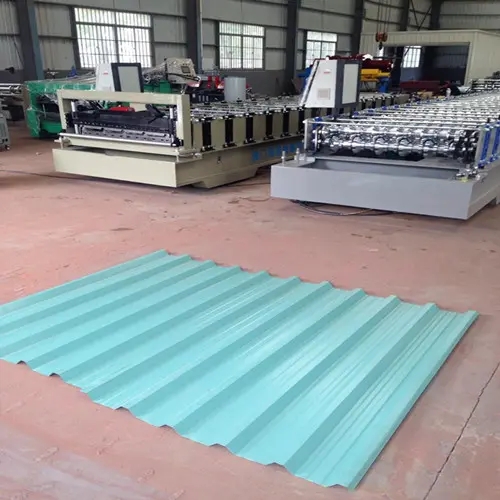
Galvanized Steel Cable Tray Roll Forming Machine An Overview
In the modern industrial landscape, efficient management of electrical systems is crucial for both safety and performance. One innovative solution that has gained popularity in recent years is the galvanized steel cable tray roll forming machine. This sophisticated piece of equipment plays a pivotal role in the production of cable trays, which are essential for supporting and managing electrical cables in various environments.
Understanding Cable Trays
Cable trays are structural components that provide support for electrical wires and cables. Unlike traditional conduit systems, cable trays offer flexibility in cable management, allowing for easy installation and maintenance. They come in various configurations and materials, with galvanized steel becoming a popular choice due to its durability and corrosion resistance. Galvanized steel is coated with zinc to protect against rust, making it ideal for both indoor and outdoor applications.
Importance of Roll Forming Technology
The manufacturing of cable trays requires precision and efficiency. This is where the roll forming technology comes into play. The roll forming process involves continuously bending a long strip of sheet metal, such as galvanized steel, into desired shapes and profiles. This method is advantageous due to its ability to produce complex shapes at high speeds with minimal material waste.
A galvanized steel cable tray roll forming machine is specifically designed to facilitate this process. It typically comprises several key components, including a decoiler, a roll forming section, cutting devices, and a control system. The machine feeds the steel strip into the forming section, where it is gradually shaped into the desired profile through a series of rollers. Once the desired length is achieved, the machine employs a cutting device to shear the tray to size.
Applications of Galvanized Steel Cable Trays
The use of galvanized steel cable trays is widespread across various industries, including construction, telecommunications, and power generation. They are particularly prevalent in industrial settings such as factories and data centers, where large volumes of electrical cables are installed.

One of the major advantages of cable trays is their versatility. They can be used in different configurations such as ladder trays, perforated trays, and solid-bottom trays, catering to the specific needs of any installation. Galvanized steel trays are particularly valued for their strength, making them suitable for heavy-duty applications.
Advantages of Using a Roll Forming Machine
Investing in a galvanized steel cable tray roll forming machine offers several benefits to manufacturers. First and foremost, the high-speed production capabilities significantly reduce manufacturing time and costs. The automation of the roll forming process also minimizes the risk of human error, resulting in consistent product quality.
Additionally, the flexibility offered by roll forming technology allows manufacturers to easily adjust the machine settings to produce different sizes and profiles of cable trays. This capability is essential for meeting the diverse needs of customers without the need for extensive retooling.
Maintenance and Operation
Proper operation and maintenance of a roll forming machine are critical for ensuring longevity and optimal performance. Routine checks on the rollers, cutting devices, and the control system are essential to prevent downtime. Training operators on the machine’s functionalities also plays a crucial role in maximizing productivity and safety.
Conclusion
In conclusion, the galvanized steel cable tray roll forming machine represents a significant advancement in the manufacturing of cable management solutions. Its ability to produce durable and versatile cable trays efficiently makes it an invaluable tool in various industries. The growing demand for electrical installations in both residential and commercial sectors ensures that the relevance of this technology will remain strong in the foreseeable future. As industries continue to evolve, so too will the machinery that supports them, enhancing efficiency and effectiveness in electrical systems management.